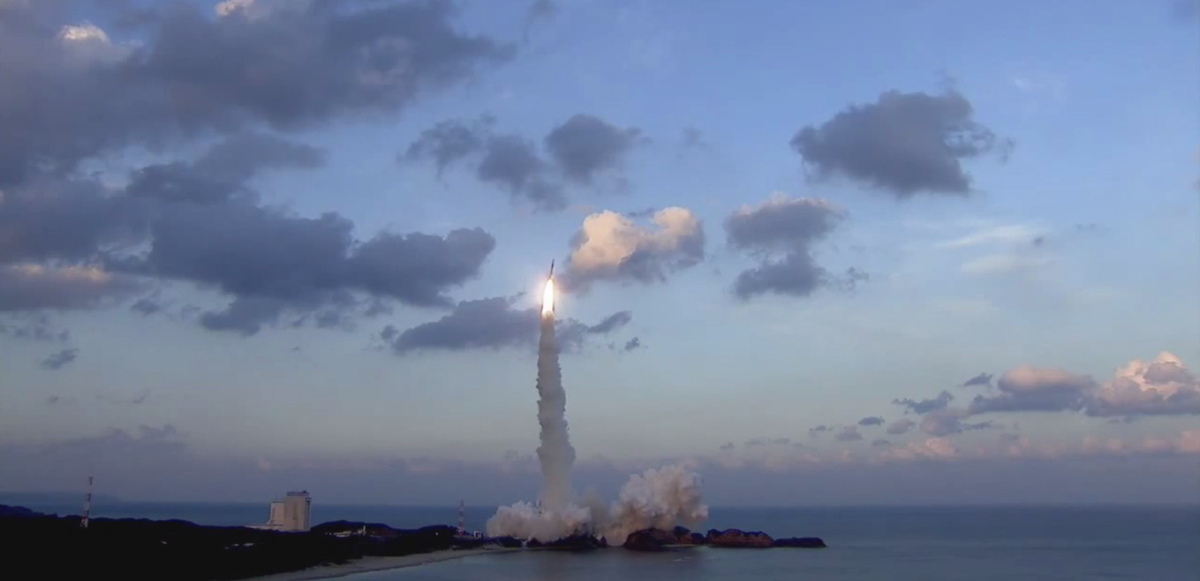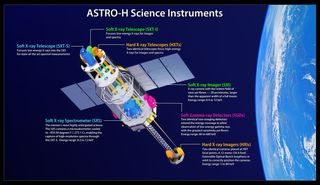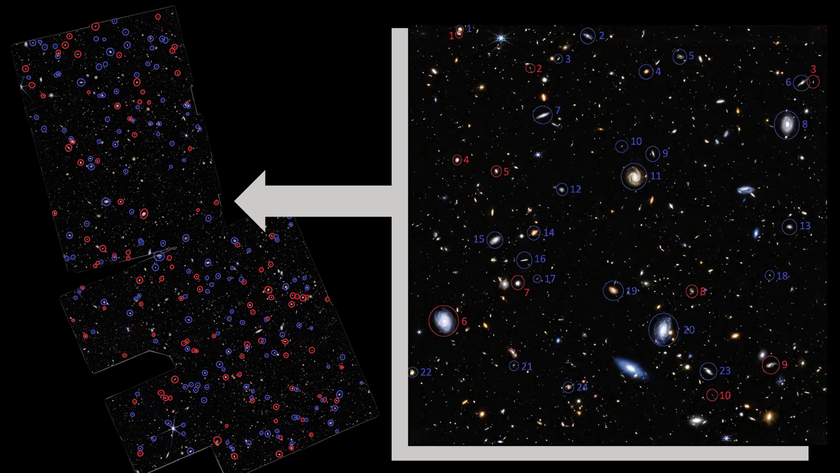
There's a new set of X-ray eyes in the sky.
The Japan Aerospace Exploration Agency's (JAXA) Astro-H X-ray observatory launched to Earth orbit today (Feb. 17) at 3:45 a.m. EST (0845 GMT; 5:45 p.m. local time in Japan) atop an H-IIA rocket from the Tanegashima Space Center.
Astro-H separated from the rocket about 14 minutes after liftoff. The satellite's solar arrays deployed as planned, and the spacecraft is currently in good health, JAXA officials said. [The History & Structure of the Universe (Infographic)]
After an on-orbit checkout period, Astro-H will begin studying the heavens in high-energy light, using four different instruments. The spacecraft's observations should help astronomers better understand a variety of phenomena throughout the universe, including dramatic supernova explosions, how material spirals into the maws of black holes and how gigantic galaxy clusters evolve over time, NASA officials have said.
Astro-H should be capable of observing X-ray sources 10 times fainter than those studied by its Japanese predecessor, the Suzaku spacecraft, which operated from 2005 through 2015, NASA officials added.
The essence of the Astro-H mission inspired the satellite's new name, which JAXA revealed today.
"ASTRO-H is the eye to study the hot and energetic universe," JAXA officials wrote in a statement. "Therefore, we name ASTRO-H 'Hitomi.' The word 'Hitomi' generally means 'eye,' and specifically the pupil, or entrance window of the eye — the aperture!"
Get the Space.com Newsletter
Breaking space news, the latest updates on rocket launches, skywatching events and more!
"Hitomi" also features prominently in an ancient legend, JAXA officials added. An artist painted four dragons without their eyes, the story goes. As a final touch, he added eyes to two of them, and those two dragons immediately flew up into the sky. The two eyeless dragons remained motionless, mere works of art rather than living creatures.
"The inspiration of this story is that Hitomi is regarded as the 'One last, but most important part,' and so we wish ASTRO-H to be the essential mission to solve mysteries of the universe in X-rays," JAXA officials added in the same statement. "Hitomi refers to the aperture of the eye, the part where incoming light is absorbed. From this, Hitomi reminds us of a black hole. We will observe Hitomi in the universe using the Hitomi satellite!"

NASA is collaborating with JAXA on Astro-H/Hitomi; one of the spacecraft's science instruments and two of its telescope mirrors were built by NASA's Goddard Space Flight Center in Greenbelt, Maryland.
Hitomi has now joined two other high-profile spacecraft that are studying the universe in X-ray light from Earth orbit: NASA's Chandra X-ray Observatory and the European Space Agency's XMM-Newton spacecraft, both of which launched in 1999.
Follow Mike Wall on Twitter @michaeldwall and Google+. Follow us @Spacedotcom, Facebook or Google+. Originally published on Space.com.
Join our Space Forums to keep talking space on the latest missions, night sky and more! And if you have a news tip, correction or comment, let us know at: community@space.com.

Michael Wall is a Senior Space Writer with Space.com and joined the team in 2010. He primarily covers exoplanets, spaceflight and military space, but has been known to dabble in the space art beat. His book about the search for alien life, "Out There," was published on Nov. 13, 2018. Before becoming a science writer, Michael worked as a herpetologist and wildlife biologist. He has a Ph.D. in evolutionary biology from the University of Sydney, Australia, a bachelor's degree from the University of Arizona, and a graduate certificate in science writing from the University of California, Santa Cruz. To find out what his latest project is, you can follow Michael on Twitter.










